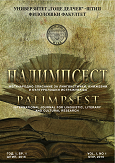THE ROLE AND FUNCTION OF DISCOURSE MARKERS: EXAMPLES FROM A YOUTUBE INTERVIEW
DOI:
https://doi.org/10.46763/PALIM24917069xhAbstract
This study examines the importance and role of discourse markers in an online YouTube interview. It specifically focuses on discourse markers, or so-called pragmatic markers, in spoken language. Discourse markers (DM) are widely used in oral communication and are often found in dialogues between speakers and their interlocutors. Speakers use them to ensure a smooth flow of conversation and to help their interlocutors understand the meaning of their utterances appropriately. The use of DM in this interview depends on the context and objectives. The choice of DM and other language elements depends on the target audience of the interview. Additionally, speakers use discourse markers to adjust the intensity of their statements or mitigate the linguistic content of their actions. The analysis sheds light on the relationship between the participants in the respective communication and demonstrates how speakers adjust politeness based on their conversation partner and situation. Examination of the language use of the moderator and the guest in the interview confirms the assumption that language is related to the attitudes of the speakers and that language is adapted depending on the communicative situation.
Keywords: discourse markers; intensifiers; repetitions; interview.


